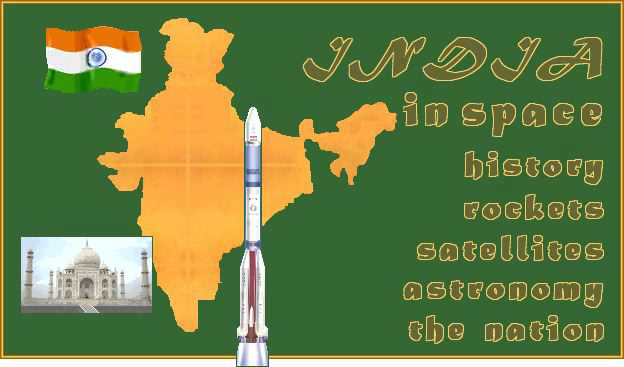

Indian Astronomy
The first references to astronomy in India were found in the Rig Veda, which dates to 2000 B.C.
India launches a powerful GSLV rocket toward space
Vedic Aryans deified the Sun, Stars and Comets.
Astronomy was mixed with astrology. The relative positions of the nine grahas (planets) are said to determine human fortune. In particular, Shani (Saturn) and Mangal (Mars) are important.
Ancient Indian astronomers were ahead of sky watchers elsewhere around the world in recognizing that stars are same as the Sun and that the Sun is center of a universe we know as the Solar System.
Astronomy in India today is referred to as Khagola-shastra, after a famous observatory at the University of Nalanda, which was called Khagola. Aryabhatta, a 5th century Indian Astronomer, worked at Khagola.
The ancient Indian astronomers had no telescopes. Instead, they used only rudimentary measuring insturments to do their work. Even so, they were able to predict eclipses and achieve quite accurate measurement of astronomical movements.
Aryabhatta. Aryabhatta was born in 476 A.D. at Ashmaka in what today is the Indian state of Kerala. He was sent to the University of Nalanda as a boy to study astronomy. His Heliocentric theory of gravitation was one of the earliest and preceded Copernicus by a thousand years. In the 5th century, Aryabhatta was one of the earliest persons to support the theory that Earth is a sphere. Who was earlier?
Aryabhatta's main work is known as the Aryabhattiya. It was so significant that it was translated into Latin in the 13th century. That's how European mathematicians learned Aryabhatta's method of calculating the areas of triangles, volumes of spheres, and square and cube roots.
Aryabhatta also wrote about eclipses and the Sun being the source of moonlight a millennium before Copernicus and Galileo. Who was earlier?
Brahmagupta. Another Indian astronomer, Brahmagupta in the 7th century calculated the circumference of Earth as 5,000 yojanas at 7.2 kilometers per yojana. That's 36,000 kilometers, which is close to modern computation of 40,000 kilometers. Who was earlier?
Learn more: